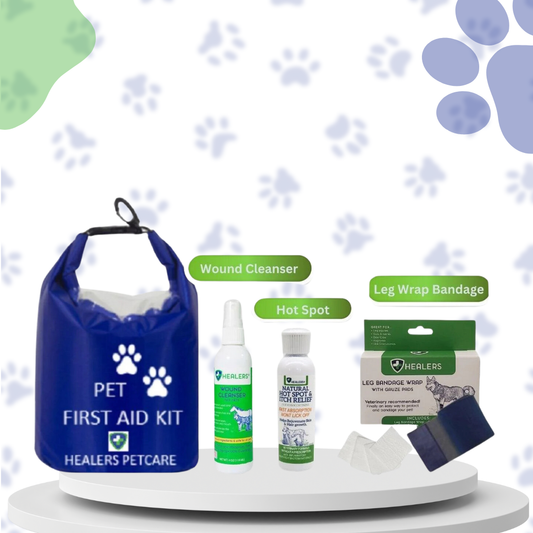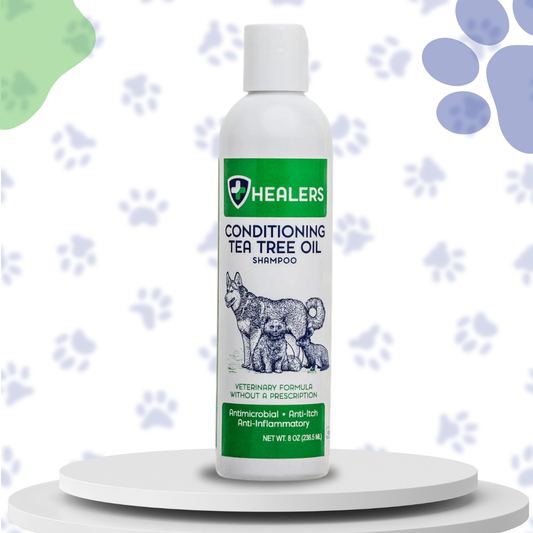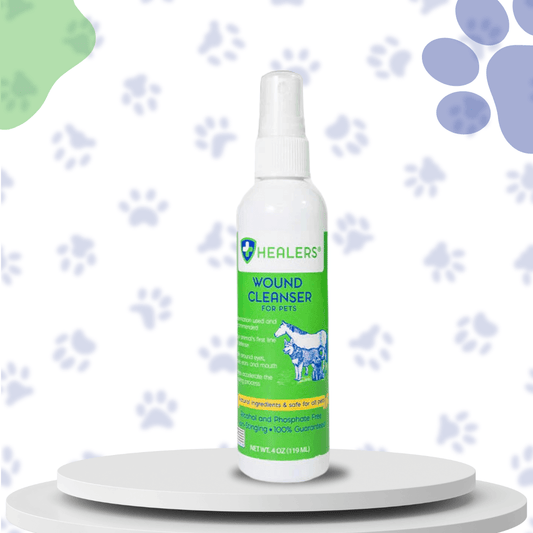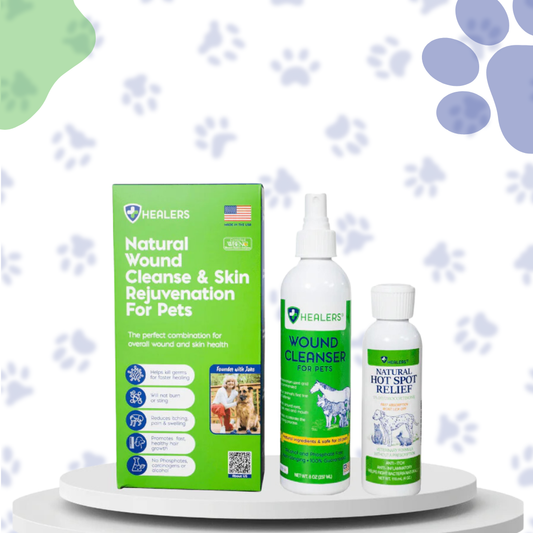Wishing for a White Christmas? Here are 5 Tips to Protect Your Dog in Snow - By Paige Knight
Wishing for a White Christmas? Here are 5 Tips to Protect Your Dog in Snow
By: Paige Knight

We all wish for a white Christmas, but did you know how dangerous cold weather is for our furry friends? As temperatures drop, your pup becomes vulnerable to everything from hypothermia and frostbite to antifreeze ingestion.
If you’ve found yourself caught off-guard and unprepared as temperatures plummet this holiday season, you’re in the right place. The expert team at Healers PetCare has the tools and tips to help you and your pup enjoy a white Christmas in comfort and safety.
The Dangers of Dogs in Snow
What is so dangerous about cold weather, anyways? Knowledge is power, and the more you know about the dangers of cold weather, the better equipped you’ll be to prevent safety concerns this holiday season.
-
Hypothermia
Let’s start with the most obvious – and arguably the most dangerous – concern for pet parents during the winter season. Colder temperatures plus windchill can equal a recipe for disastrous health crises, like hypothermia. Hypothermia happens when the body loses heat faster than it can warm itself up, and if not addressed swiftly, it can lead to death. While arctic breeds, like huskies and malamutes, are naturally fortified against hypothermia, dogs who are smaller, thinner, short-haired, have diabetes or another medical condition, old, and/or young are at a heightened risk of hypothermia.
-
Frostbite
Dogs’ paws are amazing; they help regulate their body temperature and are made up of adipose tissue that inhibits freezing. Dogs even have a specialized circulatory system that protects their paws from freezing!

Dogs’ paws are incredibly useful and durable, but they can still be harmed by winter conditions.
That being said, dogs’ paws are not indestructible. In the cold, dogs’ bodies will naturally redirect blood to the regions surrounding their vital organs, leaving their legs and paws with restricted blood supply. The spaces between their toes are vulnerable to ice and snow buildup that causes frostbite, and their paw pads can become dry, chapped, or cracked in wintery conditions.
-
Sidewalk Salt and Chemicals
Snow and ice aren’t the only substances that can sneak between your dog’s toes. To combat slippery roads, cities will often use salt and chemicals to help melt the ice and provide traction on slippery sidewalks. While helpful for humans, these substances can be harmful and irritating to your dog’s paws. Grit that gets stuck between dogs’ toes causes irritation, and chemicals may exacerbate chapped or cracked paw pads. These chemicals can also be dangerous if your pup licks them off their feet after outings.
-
Antifreeze
While on walks or potty breaks, dogs may come across antifreeze that has leaked from car radiators during the winter months. This substance smells and tastes sweet, so your pup may be tempted to lick it off the street or their paws. Even in small quantities, antifreeze can lead to kidney damage and death. If you notice any liquids near a car, steer clear of it and take extra care cleaning your pup’s paws after getting home. If you suspect that your pup has ingested antifreeze, contact a vet immediately. This is a potentially life-threatening incident where time from ingestion to treatment can be a factor.

Make sure to check in with your vet before cold weather sets in and assess whether your dog can handle winter outings.
-
Pre-Existing Health Conditions
Many pre-existing health conditions, like heart problems, diabetes, and thyroid issues, can cause your dog to be less able to handle cold weather. Before embarking on winter outings, assess what your dog can and can’t handle.
5 Tips for a White Christmas
-
Keep Those Paws Clean and Moisturized
To combat chapping and cracking, it can help to keep your pup’s paw pads moisturized. Before going on outings, use a paw balm or Vaseline to coat your dog’s paws. This will serve two purposes: keeping their paw pads moisturized and creating a protective barrier against snow, salt, and harsh chemicals. Once you get home, don’t forget to wipe their paws with warm water!
-
Layer Up
If your dog has shorter fur, make sure to get them some thermal dog clothing to protect them from the elements. A nice jacket should do the trick, but if you live somewhere where it gets particularly chilly, you can also get a thermal base layer, a hat, and/or some socks to provide further protection.

This guy is prepped to enjoy a white Christmas in style!
-
Keep Up With Grooming
To combat ice buildup on the fur between your pup’s paw pads, be sure to keep their paws properly groomed. Trim the extra fur that grows between their paw pads, and be sure to keep nails trimmed. Untrimmed nails cause dogs’ toes to spread when walking, exposing the sensitive area between their paw pads to increased ice and snow buildup.
-
Limit Outdoor Time
What’s the best way to ensure your dog won’t have a bad reaction to the cold? Simply stay inside all winter with the heater blasting, a fire crackling, and a cup of hot cocoa in your hands. Of course, we kid; outdoor time is super important for your pup, even in the winter. However, it can be helpful to limit the time you spend out in the cold. This can mean going on multiple short walks throughout the day instead of one long one, or adding more indoor enrichment to supplement lost outdoor time.
If you are planning to take your dog on long winter outings, be sure you’re feeding them high-calorie food. Dogs metabolize calories to stay warm, so the more fuel they have the better.
-
Get Some Dog Boots
We saved the best tip for last. While balms and Vaseline can help to protect your pup’s paws, the only way to truly minimize exposure to ice, snow, salt, and chemicals is to invest in a nice pair of dog booties. We’ve got you covered with the Urban Walker Dog Boots, our all-weather dog boots that are equipped to handle both hot and cold temperatures. Described by our local veterinarian as “the best boot we’ve ever seen,” the Urban Walkers are waterproof, lightweight, machine washable, and exceptionally durable.
Just remember that some pups may take some time to get comfortable with wearing boots. Be sure to use positive reinforcement training methods to acclimate your pup to any new clothing, and give them time to get used to wearing them inside before taking the show outdoors.

This pup may have taken the term “dog boots” a little too literally…
Our team at Healers PetCare is committed to your dog’s health and safety in all aspects of life. If your pup is struggling with sores, cracking, or irritation from winter conditions, check out our website to view our inventory of helpful products, like the Healers Medical Booties and Healers Gauze Pads. With our help, you can ensure that your dog’s health is protected no matter what life throws at you!
Paige Knight is a freelance blogger specializing in all things pets. She uses her marketing and rhetorical skills to help make pets’ (and their parent’s) lives better. When she’s not writing, Paige spends her time playing and going on adventures with her dog, Luna, and her three cats, Dusk, Holla, and Cleo. Take a look at the KnightWriting website to learn more about Paige, read some of her other work, and (most importantly) meet her furry family!





